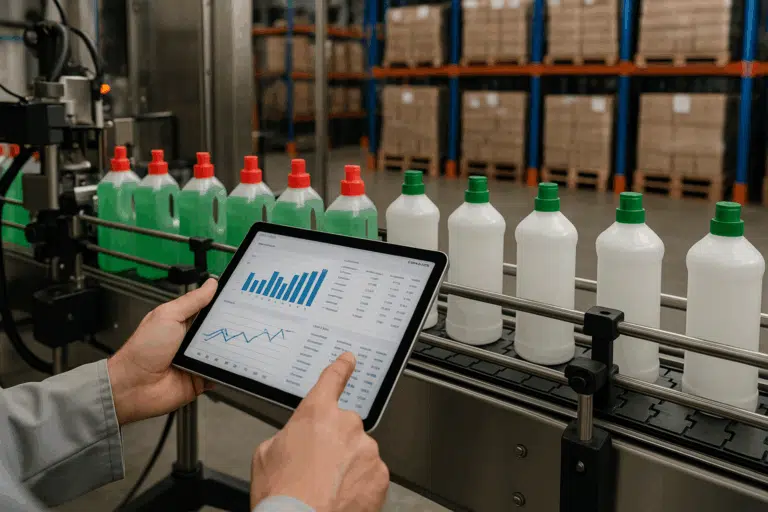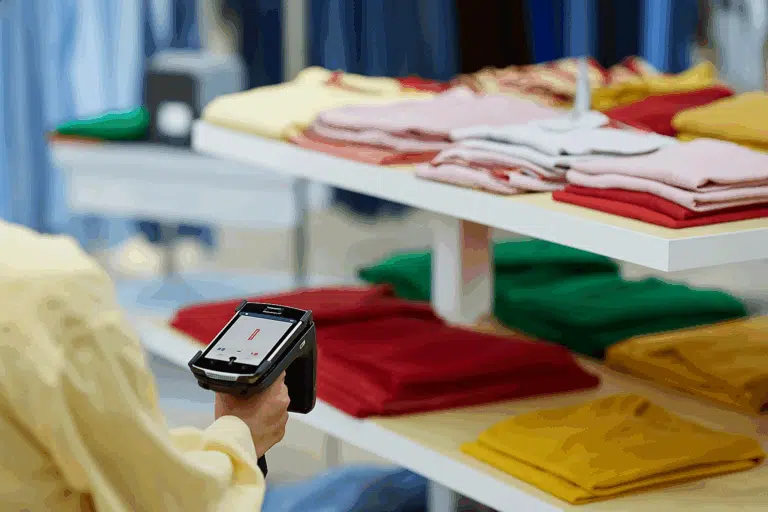Is your hospital having trouble with managing its operating room inventory? It’s tough with so many supplies needed for surgeries. At CPCON Group, we know how important it is to manage OR inventory well. This ensures patient safety, cuts costs, and makes surgeries run smoother.
Managing OR inventory is complex. It includes tracking stock, buying supplies, processing orders, and predicting demand1. Hospitals lose 5-10% of OR stock because it expires. This shows we need to track and manage expiration dates well2. Also, ordering too much because demand is hard to predict leads to extra inventory and higher costs2.

At CPCON Group, we use RFID technology for better inventory management. Our tools help track surgical supplies and control hospital inventory. They make workflows smoother, cut down on supply chain work, and show stock levels in real-time2. With data, hospitals can make smart choices, manage stock better, and get supplies based on what they need2.
Good OR inventory management saves money and keeps patients safe during surgery1. Hospitals can work together, use the same supplies, and use technology. This makes sure the right supplies are there when needed, avoiding stockouts and delays in care1.
Table of Contents
ToggleKey Takeaways
- Effective operating room inventory management is key for saving money, keeping patients safe, and making surgeries run better.
- Healthcare providers struggle with expired stock, too much ordering, and hard to predict demand in managing OR inventory.
- CPCON Group’s RFID solutions and automated tools give real-time info and help make smart choices.
- Working together, using the same supplies, and technology are important for good OR inventory management.
- Improving OR inventory management cuts costs and makes patients safer and operations more efficient.
The Importance of Efficient OR Inventory Management
Managing inventory in operating rooms is key for great patient care and keeping hospitals financially stable. These rooms are a big source of money and waste in hospitals3. By making the supply chain more efficient and using instruments better, hospitals can save a lot of money. This money-saving can greatly help the hospital’s finances.
Financial Impact of OR Inventory on Hospitals
Operating rooms make up about 60% of a hospital’s costs but bring in a lot of money3. Health costs in the USA are going up by 5.8% each year, faster than the country’s growth3. By 2025, health costs could be about 20.1% of the GDP3. With hospitals using 32% of health spending in 2015, making OR inventory management better can save a lot of money3.
A study showed that the cost of disposable supplies for a simple surgery was between $92 and $637, with an average of $3333. This shows there’s a lot of room to cut costs by managing supplies better.
Challenges in Managing OR Inventory
Managing OR inventory is harder than in manufacturing. It’s all about balancing the cost of inventory and how quickly surgeons need supplies3. The unpredictable nature of surgeries means a lot of different items need to be kept in stock4. Managing OR inventory is also complex because of the high value of the items4.
Hospitals often don’t have a clear way to manage materials, especially in the OR4. Nurses are in charge of managing supplies and tracking when they expire, which is hard because of the large number of items4. Keeping enough supplies on hand can lead to wasting money by stocking too much3. Not having enough supplies, especially expensive ones, can cause delays and even be dangerous for patients3.
Systems in ORs might not track all the items well, leading to manual work4. Problems with getting the most money from the OR include old item lists, not having the right technology, and using manual data entry4. Not having the right data on how surgeries use supplies can hurt how much money the OR makes4.
At CPCON Group, we know the main goal of managing inventory in healthcare is to cut costs without lowering service quality3. We use our knowledge of managing assets and controlling inventory to help hospitals solve these problems and make their inventory management better.
Strategies for Optimizing OR Inventory Control
The CPCON Group knows how vital good inventory management is in hospitals. We’ve been doing this for over 25 years and have found the best ways to manage surgical supplies. Our methods help hospitals save money and improve how they manage supplies, which is a big part of their budget5.

Standardizing Surgical Supplies and Instruments
We suggest making all surgeons use the same supplies and instruments. This cuts down on the number of items hospitals need to keep in stock. It helps avoid having too much or too little of anything, saving money6. Hospitals can also make ordering easier and use less space by using fewer types of supplies7.
Implementing Inventory Management Systems
Using inventory systems that grow with your needs is key. They keep track of what you have, when it expires, and how often it’s used. This helps hospitals plan better and fix any supply chain problems6. RFID technology gives real-time updates on stock, helping avoid running out or having too much7. Data helps make smart choices about what to order and how to work with suppliers5.
Reducing Waste and Obsolescence
It’s important to cut down on waste and items that go out of date. Overstocking can lead to waste, but good inventory management stops this5. Checking and updating surgeon preference cards helps use only what’s needed for each procedure, cutting down on waste. Using a just-in-time system and working with suppliers for consignment inventory also helps save money and space7. These steps not only save money but also help patients by making sure they get the equipment they need on time67.
By using these strategies, hospitals can save a lot of money, work more efficiently, and take better care of patients. Cutting down on waste and improving supply chain management could save hospitals about $11 million a year. The whole healthcare industry could save up to $25 billion a year5. Let us at The CPCON Group help you improve your inventory management in the operating room.
Leveraging Technology for Effective Operating Room Inventory Management
At The CPCON Group, we know how key technology is for managing operating room inventory. We use real-time inventory tracking to make healthcare places more efficient and cost-effective.

Automated Inventory Tracking and Replenishment
Automated tracking and replenishment are key for good inventory management. Our software uses data-sensing tech, AI, and a big SKU database. This helps healthcare places manage their inventory better and plan for the future.
RFID smart cabinets change the game for managing OR inventory. They always track items and show how many are left. This helps with managing items easily and keeps track of stock levels. Cleveland Clinic used RFID to make patients safer, earn more money, and cut down on waste8.
Real-time Visibility and Data Analytics
Seeing what’s happening in real-time is key for managing OR inventory well. Our tech can quickly identify items with just a 3-second scan. It uses a big SKU database to make sure items are correctly identified.
Data analytics are also crucial for better inventory management. They help healthcare places understand how items are used. This lets them keep the right amount of stock and cut waste. In the U.S., hospitals spend about USD 83 billion a year on things like gloves and gowns9. With real-time data, they can find ways to spend less.
| Technology | Benefits |
|---|---|
| RFID Smart Cabinets | Perpetual item tracking, pain-free consignment management, local owned-stock management |
| Image Recognition | Automatic item identification, 3-second item capture, global SKU database integration |
| Real-time Data Analytics | Insights into usage patterns, optimized stock levels, waste reduction |
These advanced technologies help healthcare places manage their inventory better. U.S. hospitals waste about USD 25.4 billion a year on unnecessary supply chain costs9. Using automated tracking and real-time data can cut these losses and improve finances.
At The CPCON Group, we’re all about using new tech to help healthcare places manage their inventory better. Contact one of our experts to see how we can help your place save money, work more efficiently, and care for patients better.
Collaborating with Stakeholders for Inventory Optimization

At CPCON Group, we know that managing inventory in operating rooms takes teamwork. We work with surgeons and suppliers to make things better. Together, we can cut costs and help patients more.
It’s important to get surgeons on board with standardizing supplies. We share info with them about other products to help them decide wisely10. This builds trust and eases worries about new supplies. Working with suppliers helps us manage inventory well. We use consignment inventory and just-in-time delivery to cut costs and stock levels10.
Good communication is key with surgeons, nurses, supply chain folks, and finance teams for smooth surgical inventory management10. Sharing data and talking often helps us find ways to save money and improve care10. Adding clinicians to the supply chain and using automation makes operating room logistics better11.
Our team at CPCON Group is here to help with inventory management in healthcare. With 25 years of experience and leading RFID technology, we’re ready to help you. Contact us to see how we can save you money, make things more efficient, and improve patient care.
FAQ
Why is effective operating room inventory management crucial for hospitals?
It’s key for hospitals because it boosts financial health, patient care, and work flow. By keeping the right amount of supplies, hospitals save money. They don’t run out of what they need for surgeries.
What are the main challenges in managing operating room inventory?
It’s tough because the OR is unpredictable, and many items are needed. Nurses are busy and struggle with expired supplies and limited systems. This leads to waste and not having enough stock.
How can standardizing surgical supplies and instruments help optimize inventory management?
Standardizing items across surgeons and procedures cuts down on what’s stocked. It makes managing inventory simpler. It also helps track what’s used and keeps the right amount in stock.
What role does technology play in effective operating room inventory management?
Tech like automated tracking, RFID cabinets, and image recognition helps a lot. These tools show what’s in stock in real time. They prevent running out and give data for better planning.
How can collaborating with stakeholders improve inventory optimization efforts?
Working together with surgeons, nurses, supply chain folks, and finance teams is key. Surgeons help standardize supplies. Suppliers offer on-demand inventory and just-in-time delivery. Sharing data helps spot areas to get better and align goals.
What are the benefits of implementing a just-in-time inventory system in the operating room?
A just-in-time system cuts down on what’s stored and saves money. It makes sure supplies come when needed, not before. It also reduces the chance of items going bad or taking up too much space.
How can data analytics help optimize operating room inventory management?
Data analytics gives insights into how supplies are used. Hospitals can see what they need, when, and how much. This helps make smart choices on what to stock, when to restock, and standardizing supplies. It leads to saving money and working better.



























